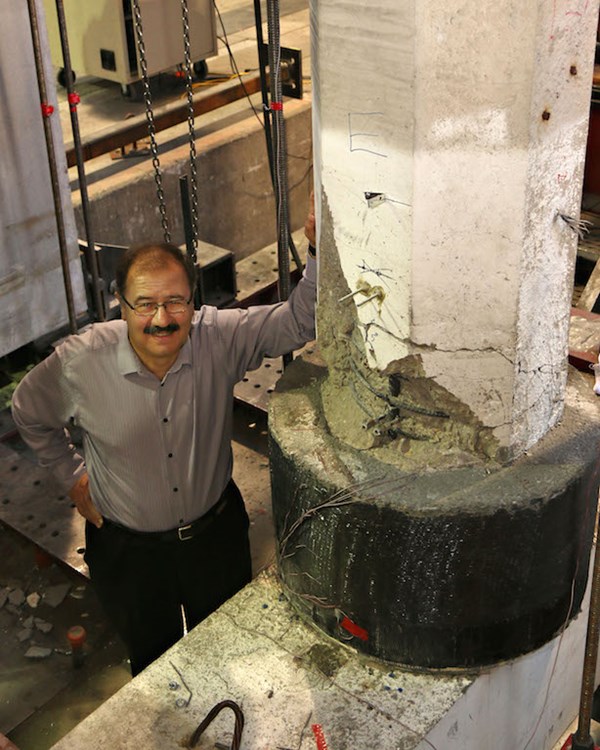Composites help to repair earthquake-damaged bridges
Utah researchers designed a new repair process that involves carbon fiber-reinforced polymer ÔÇťdonutsÔÇŁ to fix damaged bridges quickly.
It can take weeks to repair bridges damaged in devastating earthquakes like the ones in Ecuador and Japan. But an interesting new process developed by a team of University of Utah researchers reportedly can fix bridge columns in a few days. It can also be used to retrofit bridges to make them more earthquake-safe.
This initiative, led by University of Utah civil and environmental engineering professor Chris Pantelides, involves creating donut-shaped concrete “repairs” that are lined with a carbon fiber-reinforced polymer. The material is stronger than concrete and steel and is built around the bottom and top of each bridge column.

Photo credit: Dan Hixson/University of Utah College of Engineering
The process : first, a number of steel rebars with heads are drilled into the foundation around the column and secured with an epoxy. Then two halves of a circular shell made of the composite fiber (that are just millimeters thick) are placed around the column and rebar and spliced together. Concrete is poured around the column and over the rebar with the composite fiber acting as a mold. The result is a repaired column with approximately the same structural integrity as the original column, Pantelides said.
“The circular shape gives you the best strength for the amount of material you are using. The stresses are distributed equally all around the periphery,” he said. “With this method, if there are future earthquakes or aftershocks the bridge will survive and damage will happen adjacent to the donut. This gives the bridge a second life.”
Pantelides and his team have filed patents on the process, and he said it can be utilized immediately by construction crews in earthquake-ravaged areas.
This process is outlined in a new paper published in the most recent issue of the American Concrete Institute Structural Journal.
The research was funded by the Utah, New York and Texas departments of transportation and the Mountain Plains Consortium. The co-authors of the study are University of Utah civil and environmental engineering doctoral students Joel E. Parks and M.J. Ameli and Dylan N. Brown, a bridge engineer at Michael Baker International in Madison, WI.
Related Content
-
Carbon fiber, bionic design achieve peak performance in race-ready production vehicle
Porsche worked with Action Composites to design and manufacture an innovative carbon fiber safety cage option to lightweight one of its series race vehicles, built in a one-shot compression molding process.
-
Otto Aviation launches Phantom 3500 business jet with all-composite airframe from Leonardo
Promising 60% less fuel burn and 90% less emissions using SAF, the super-laminar flow design with windowless fuselage will be built using RTM in Florida facility with certification slated for 2030.
-
Revisiting the OceanGate Titan disaster
A year has passed since the tragic loss of the Titan submersible that claimed the lives of five people. What lessons have been learned from the disaster?






